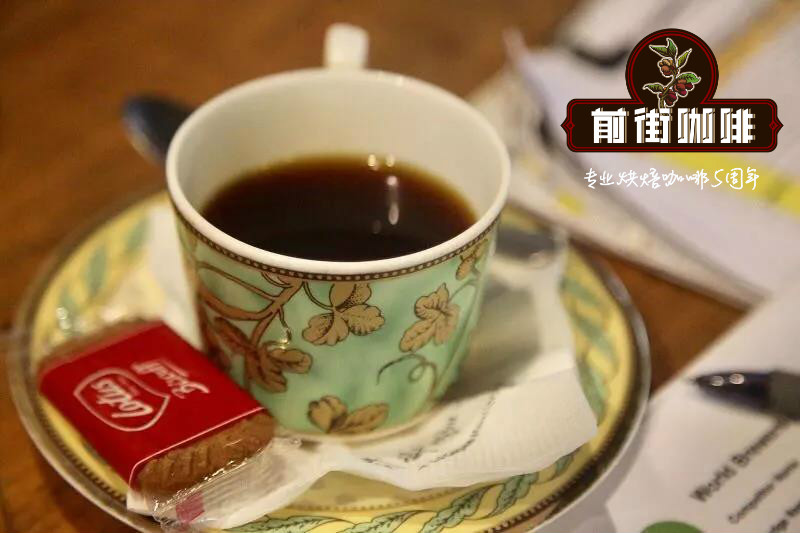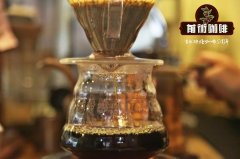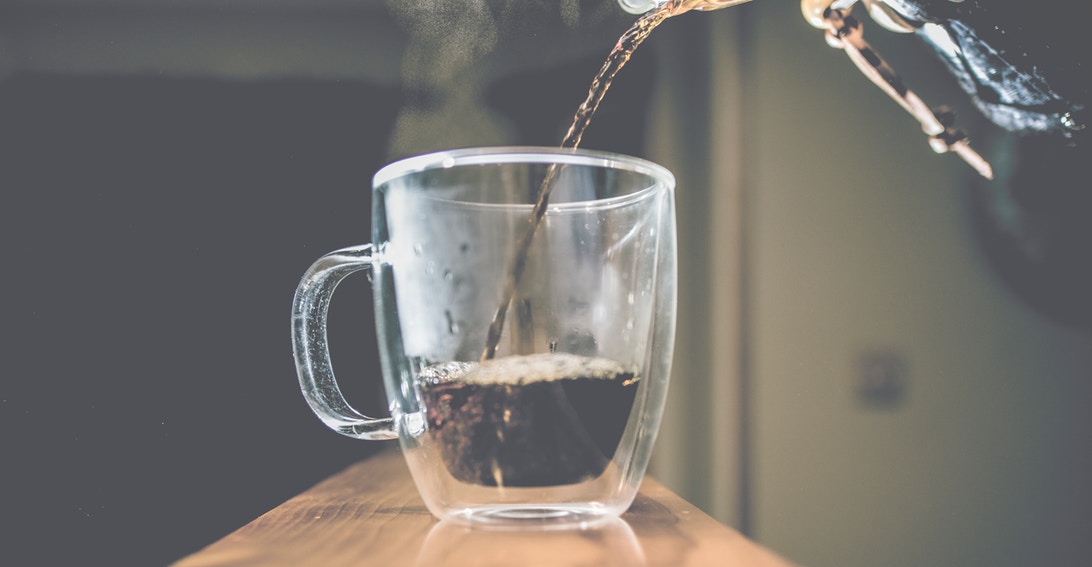How much caffeine does a cup of coffee contain? Does decaf taste good?

How much caffeine does a cup of coffee contain? Does decaf coffee taste good?
In addition to the variety of coffee beans, the amount of caffeine in a cup of coffee mainly depends on the baking time and extraction time of coffee beans. The way to coffee, in this, as long as you know how much caffeine is.
Varieties of coffee beans: Arabica beans vs. Tanbusta bean
In addition to being related to personal health, the actual caffeine content has a lot to do with the variety of coffee beans. Generally speaking, the cost of busta beans is lower than that of Arabica beans, so most canned coffee on the market will choose or mix them, but people who have too much caffeine should note that busta beans are cheap, but they contain three times as much caffeine as Arabica beans!
100% of raw coffee beans are Arabica, and caffeine is below 12mg / g, which is already a species with low caffeine content.
Coffee roasting degree: roasting vs deep roasting
Caffeine content is inversely proportional to baking degree.
Generally speaking, the deeper the coffee is roasted, the lower the caffeine content of roasted coffee. Because caffeine is attached to the water of coffee beans, and caffeine will cause high levels of roasting, the water will be converted to body evaporation, so the caffeine roasted by black is short in duration and low in temperature. as a result, roasted coffee has more caffeine and monosodium acid than deep-roasted coffee.
However, another method is that caffeine is very stable in the process of baking. Caffeine will not evaporate until the baking temperature is above 237 ℃, but it is impossible to bake at such a high temperature under normal roasting. Generally, the roasting to medium roasting is about 192 ℃ to 208 ℃, and the re-roasting is about 230 ℃ to avoid fire. As a result, the content of caffeine is almost unchanged before and after baking, and some people mistakenly think that heavy-roasted coffee is bitter and caffeine is too much, which is not the right way to do so. On the contrary, because heavy-roasted coffee beans have more pores than roasted beans, it is easier to extract water-soluble caffeine.
Third, the way coffee is brewed
The content of caffeine is proportional to the extraction time of coffee.
Generally speaking, the amount of caffeine varies from the way coffee is brewed and the amount of caffeine used by tools. Therefore, the longer the coffee powder is soaked, the more caffeine will be released. Coffee extracted over a long period of time will increase the caffeine content.
Usually people mistakenly think that the caffeine content of the coffee is high, because it is too thick and the taste is strong, but in fact, the coffee liquid is extracted in a relatively short period of time (within 30 seconds). The actual caffeine content of coffee coffee is higher than that of coffee coffee if it takes longer to extract caffeine such as hand-held coffee, French coffee and coffee.
Does decaf coffee taste good?
It is true that coffee contains caffeine. If you drink coffee, you should drink it naturally. Therefore, Xiao Li advises people not to drink decaffeinated and decaffeinated coffee. According to League standards, decaffeinated coffee is defined as having no more than 0.1% caffeine by weight after processing. The Starbucks standard is removed to less than 3% of the original content, which can only be called decaf, not decaffeinated coffee.
How do you make decaf coffee?
Generally speaking, low caffeine means that coffee beans are separated from caffeine before they are sent to the roaster, but low-caffeinated coffee is not 100% caffeine-free. It can only remove 94% of the caffeine, 98% of the caffeine, and still contains 2%, 6%, and 6% of the caffeine.
At present, the main methods to remove caffeine are dissolving method, Swiss water treatment method and carbon dioxide extraction method.
I. dissolving extraction method
The coffee beans are processed first, then the bean surface is expanded and dough is added by high-fat and high-fat steaming, then the bean is dissolved with dichloromethane (CH3CI), and the caffeine is extracted. In this method, dichloromethane is used to adsorb the bean surface to dissolve caffeine, but it does not reflect the smell of coffee beans.
II. Swiss Water treatment Law
Soak the coffee beans in hot water, wait for caffeine and other ingredients to dissolve into the water, filter the caffeine in the semen with activated carbon, and then introduce the non-caffeinated semen back to the previous coffee beans, allowing the beans to reabsorb the lost ingredients. This method does not use any chemical solution to extract caffeine, of course, it is not extracted with chemical solution, but some of the ingredients of the coffee are also overheated by activated carbon, causing the coffee to lose some flavor. Not only that, the low-caffeinated coffee produced by this method is also known as high-caffeine.
III. Carbon dioxide stripping extraction
Roasting coffee beans produces a large amount of carbon dioxide (CO2). At this time, the carbon dioxide is highly processed into liquid, and then poured into the processed coffee beans to remove caffeine, and then put energy to convert carbon dioxide into natural energy. The removal of caffeine in this way will not cause caffeine loss, the color will not change, and it is not easy to extract substances other than caffeine. It can retain the original flavor of coffee beans, but because it needs to be completed in a special high-temperature environment, it is necessary to invest in equipment. As a result, the amount of low-caffeinated coffee extracted in this way is less than that seen on the market.
No matter which one is used, the industrial process of removing caffeine from coffee beans is very strenuous, and the carbon dioxide and organic solubilization of coffee beans can also remove the aroma of coffee, and the smell of coffee beans is more or less broken in the process of processing.
Important Notice :
前街咖啡 FrontStreet Coffee has moved to new addredd:
FrontStreet Coffee Address: 315,Donghua East Road,GuangZhou
Tel:020 38364473
- Prev

How to distinguish between espresso and individual coffee?
I believe that when many coffee rookies first entered the coffee shop, they looked confused in the face of the menu written on the blackboard. I remember that the editor had just stepped into the coffee shop to taste the first cup of coffee in my life. Anyway, I was confused. I was confused. I only know that I listened with a confused face and asked a confused question, and the whole process was confused. What is a single cup of coffee? A single cup of coffee is made from the original product.
- Next

How do you analyze coffee's chemical composition to predict flavor, aroma and quality?
Professional coffee knowledge exchange More coffee bean information Please pay attention to the coffee workshop (Weixin Official Accounts cafe_style) There are many factors that affect the flavor of coffee: variety, roasting degree, brewing formula, processing method, etc., but when you look deeper, you will find that flavor depends on only one thing: the composition of compounds. Coffee roasting method, coffee variety, species
Related
- Beginners will see the "Coffee pull flower" guide!
- What is the difference between ice blog purified milk and ordinary milk coffee?
- Why is the Philippines the largest producer of crops in Liberia?
- For coffee extraction, should the fine powder be retained?
- How does extracted espresso fill pressed powder? How much strength does it take to press the powder?
- How to make jasmine cold extract coffee? Is the jasmine + latte good?
- Will this little toy really make the coffee taste better? How does Lily Drip affect coffee extraction?
- Will the action of slapping the filter cup also affect coffee extraction?
- What's the difference between powder-to-water ratio and powder-to-liquid ratio?
- What is the Ethiopian local species? What does it have to do with Heirloom native species?

